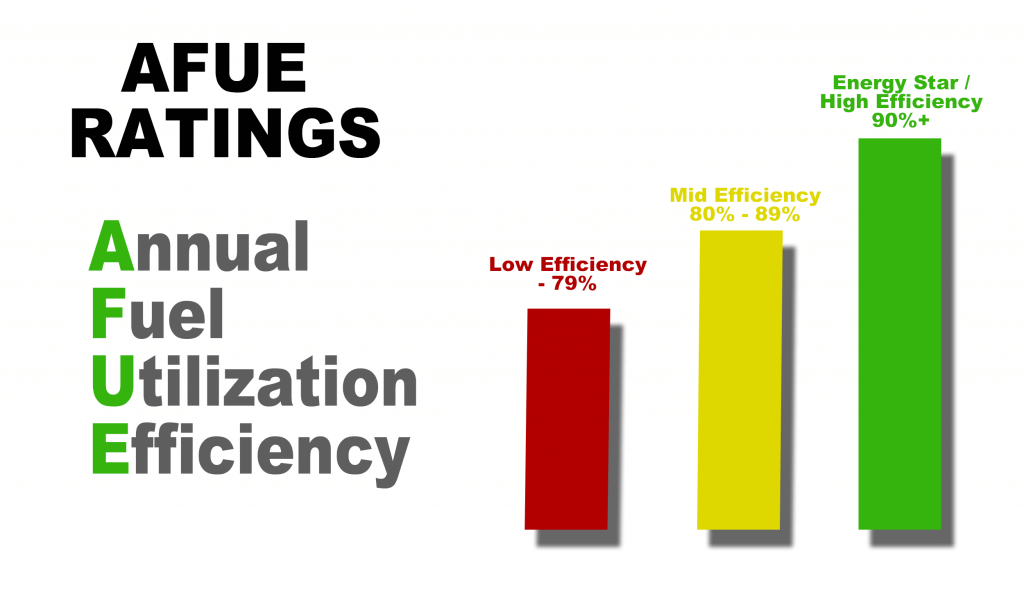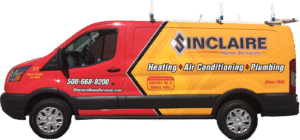
When the temperatures drop, your heating costs also start to rise. A more efficient furnace helps you save money while an inefficient heater drives up your costs. Your furnace’s efficiency will impact your utility bills. Your furnace’s Annual Fuel Utilization Efficiency (AFUE) rating explains your furnace’s energy efficiency. Learn more about furnace efficiency ratings and what they actually mean in Sinclaire Home Service’s expert guide.
What Are AFUE Furnace Ratings?
AFUE ratings are set by the U.S. Department of Energy. The National Appliance and Energy Conservation Act of 1987 created the AFUE rating system to communicate energy usage. AFUE ratings are percentages. The higher the percentage, the more efficient a furnace is. Our furnace repair Holliston experts recommend finding this number on your furnace’s faceplate. You can also research your unit online to find the rating.
An AFUE rating only addresses the furnace itself. Drafts, poor insulation, sloppy ductwork, and other issues can waste more than 30% of your system’s heat. Schedule a visit with our furnace tune-up Canton experts to ensure your home stays warm.
What Your Furnace’s Efficiency Rating Means
Your AFUE rating refers to how much fuel your furnace converts to heat. A furnace rated at 90% transforms 90% of its fuel into energy throughout your home. The other 10% is spent in the combustion process. This extra fuel can be lost through leaks, inefficient vents, aging equipment, and more.
Think of your AFUE rating as the percent of each dollar that goes towards heating your home. With a 90% rated furnace, you’ll get 90 cents of heat for every dollar you spend. The extra 10 cents is wasted money. The more efficient your furnace, the more money you’ll save.
Modern AFUE Guidelines
Recent furnace models tend to have better AFUE ratings than vintage systems. If you have a furnace from the 1970s or 1980s, you might have an AFUE’s lowest rating of 56%. These older furnaces can waste up to 44% of their fuel while heating your home.
More recent AFUE standards demand higher performance. A 78% rating was required from 1987 to 2015. Currently, new furnaces must reach 80% or higher. Energy Star-certified furnaces are 90% or higher. Many different elements can impact the AFUE rating. Our furnace repair Framingham team reports that the following qualities can make or break an AFUE score:
- Type of fuel used
- Furnace size
- Ignition method
- Blower and exhaust style
- Heat exchange format
- Sealed or unsealed combustion
Low-Efficiency Furnaces
Older furnaces normally have low AFUE ratings between 56-70%. These single-stage furnaces usually have a continuous pilot light. These furnaces are inefficient because they don’t usually have adjustable speeds or exhaust systems.
Mid-Efficiency Furnaces
Most modern furnaces have mid-range efficiency between 80-89% AFUE. Such furnaces are normally gas-powered with electric ignition. Some two-stage models provide more heat control than you’ll find with a single-stage option.
Highly Efficient Furnaces
High efficiency, Energy Star-rated furnaces have AFUE ratings of 90% or higher. These options use sealed combustion chambers to send exhaust out of your home. Other advanced features include heat exchangers, ignition, and multi-stage designs.
Explore Furnace Ratings With Sinclaire Home Services
Your furnace’s AFUE rating helps you understand its energy efficiency. Highly rated furnaces help you save money and reduce heating costs. Our furnace repair Holliston team can help you learn more about your furnace. Contact us to explore your furnace’s AFUE rating today.






